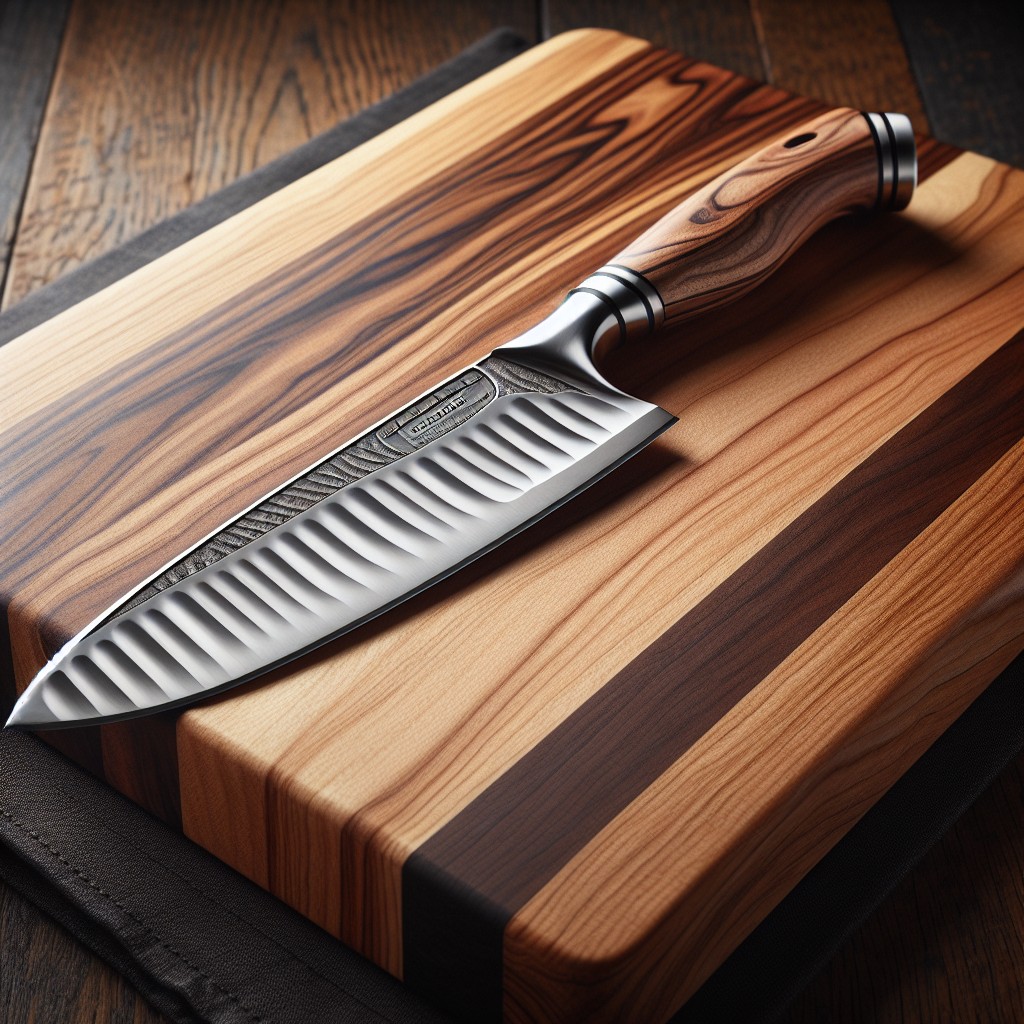Last updated on
Understanding the actual size of a 10-inch length becomes easier because this post curates a list of everyday objects that are approximately the same size.
Understanding the dimensions of 10 inches can be surprisingly practical, whether you’re eyeing that perfect bread knife for even slices, comparing tablet screens like the Samsung Galaxy Tab A7, or simply trying to visualize everyday objects.
Imagine folding an A4 size paper nearly in half or stretching your hand from thumb to pinky—that’s the expanse you’re dealing with.
Even a quirky yet effective comparison like stacking ten loonie coins gives you a tangible grasp on this measurement.
Let’s explore these real-life examples that provide a tangible sense of just how big 10 inches is, ensuring that by the end of this, you’ll effortlessly gauge the scale in a variety of contexts.
Key takeaways:
- Bread Knife: Approximates 10 inches, perfect for slicing bread.
- Samsung Galaxy Tab A7: 10.4-inch diagonal display represents 10 inches.
- A4 Size Paper: Folding it halfway creates a rough 10-inch estimate.
- Hand Size: Adult handspan, about 10 inches from thumb to pinky.
- Ten Loonie Coins: Stacked vertically, visually represents 10 inches.
What's Inside
Common Household Items That Are 10 Inches Long

Easily found within the confines of your home, certain items can serve as quick reference points for visualizing ten inches:
– **Bread Knife**: Often designed for effective slicing, a standard bread knife’s blade frequently measures close to ten inches. – **Samsung Galaxy Tab A7**: This popular tablet’s screen diagonally measures at just about ten inches, providing a modern tech example. – **A4 Size Paper**: Lengthwise, it’s just shy of 12 inches, but folding it halfway gives you a rough approximation of the ten-inch mark. – **Hand Size**: From an adult’s outstretched thumb to pinky finger, the span is for many around this length. – **Ten Loonie Coins**: Stacked one on top of another, Canadian one-dollar coins (“Loonies”) reach our target measure.These tangible examples help anchor the abstract number in reality, making it easier to estimate measures and sizes in everyday situations.
Bread Knife

When rummaging through your kitchen drawers, you might stumble upon a bread knife with a blade that roughly measures up to 10 inches. This size is ideal for slicing through a standard loaf of bread, allowing for even cuts without squishing the bread—a frustration many of us can relate to when using a shorter knife.
Beyond the kitchen, envisioning this type of knife can serve as a handy visual reference for a multitude of tasks. If you’re a craft enthusiast looking to cut a piece of fabric or you’re setting up a display and need to gauge space, picturing a bread knife’s blade can provide an immediate mental image of length.
Not only that, but a 10-inch blade is indicative of the knife’s purpose—the longer length helps with sawing through a crusty exterior without damaging the soft interior. So next time you’re eyeing an object and wondering how long 10 inches might be, think of the balance and utility of a bread knife, and you’ll have a pretty solid reference point.
Samsung Galaxy Tab A7
Equipped with a sleek 10.4-inch diagonal display, the Samsung Galaxy Tab A7 offers a vivid example of the 10-inch size in a modern context.
To visualize the dimensions when you’re without the device:
- Imagine two standard No. 2 pencils end to end, as each is about 7.5 inches, which closely approaches but is slightly shorter than the tab’s screen.
- Picture a typical two-slice toaster, which commonly measures close to ten inches in length.
- Envision four golf tees lined up in a row, with each tee being about 2.5 inches long.
This tablet’s width, slightly less than the display’s diagonal length, provides a tangible sense of a 10-inch span, connecting the concept to the technology you might use or encounter daily.
A4 Size Paper
If you’re trying to visualize 10 inches, consider the A4 paper commonly used for printing. This universally recognized standard sheet measures approximately 8.27 by 11.69 inches. Looking at the longer side, it exceeds 10 inches by a little over an inch and a half. To get a sense of 10 inches, imagine trimming off this excess from one end of the paper. What remains would approximately represent the length you’re picturing. This familiarity makes the A4 sheet an excellent makeshift tool for envisaging measurements when a ruler isn’t at hand.
Hand Size
When judging the expanse of 10 inches with hand size, consider these informative points:
1. Adult Handspan: Typically, the distance from the tip of the thumb to the tip of the pinky finger on an outstretched hand for an average adult can approximate 10 inches. This is often referred to as the handspan.
2. Measurement Technique: To estimate, extend your fingers as wide as possible. If an adult’s handspan falls short, using the width of another finger can help reach the 10-inch measurement.
3. Kids vs. Adults: Children’s hands are smaller, so their handspans are much less than 10 inches. For them, two handspans might be a closer estimate.
4. Gender Differences: Men’s hands are generally larger than women’s, so women may need to use the handspan-and-a-half technique to estimate a 10-inch length.
Remember, these are rough estimates and for precise measurements, using a ruler or tape measure is always recommended.
Ten Loonie Coins
Stacking ten loonie coins, the Canadian one-dollar pieces, vertically will give you a visual and tangible representation of approximately 10 inches in height.
Each loonie measures about 1.95 millimeters in thickness.
When multiplied by ten, the total stack reaches 19.5 millimeters, which is just shy of 2 centimeters.
To visualize 10 inches, you’d need to imagine roughly 25 of these stacks lined up, as 10 inches is equivalent to about 25.4 centimeters.
This method provides a practical way to estimate lengths using common currency, especially when you don’t have a ruler at hand.
Measures of Length: Comparing Inches to Centimeters and Meters
Understanding the conversion of inches to centimeters and meters is vital in a variety of contexts. Let’s simplify:
- One inch equates to exactly 2.54 centimeters. Consequently, 10 inches would be 25.4 centimeters.
- To convert inches to meters, remember that one meter equals 100 centimeters. Therefore, 10 inches would translate to 0.254 meters.
Recognizing these conversions can help you in tasks that range from sewing projects to scientific measurements, ensuring precision across different systems of measurement. Keep in mind that most standard rulers have both centimeters and inches, which can be handy for a quick reference.
Visualizing 10 Inches: Objects in Nature and Everyday Life
When trying to grasp the concept of a 10-inch measurement without a ruler at hand, look around; nature and everyday settings offer clues. For instance, the typical length from an adult’s wrist to the tip of their middle finger hovers around the 10-inch mark – a handy ruler attached right to your arm.
In the garden, envision three standard-sized zucchini end to end, most often they’ll collectively measure close to this length. Inside, vinyl records provide a near-perfect visual guide with their diameter inching just above this size. Similarly, a standard chef’s knife – a staple in many kitchens – also gives you a practical point of reference.
Always remember that these are approximations, but they’re incredibly useful for conceptualizing lengths in a pinch.
Creative Ways to Estimate 10 Inches Without a Ruler or Tape Measure
Improvise with everyday items to visualize 10 inches when a ruler isn’t at hand:
- Dollar Bill Technique: Stack four US dollar bills, as each one is about 2.61 inches long, making a rough estimate of 10 inches.
- Smartphone Trick: Many smartphones are approximately 5 to 6 inches in length. Placing two of these end-to-end can give a quick approximation.
- DIY Paper Ruler: Fold a standard letter-size paper (8.5 by 11 inches) widthwise. The 11-inch side will easily show 10 inches, with an inch to spare.
- Hand Span: For many adults, the distance from the thumb tip to the pinky tip with a fully extended hand is close to 8 to 10 inches.
- Credit Card Estimate: A typical credit card is about 3.37 inches wide. Laying three side-by-side gets you just over 10 inches.
By using these methods, you can gauge lengths close to 10 inches with a surprising degree of accuracy, no conventional measuring tools required.
FAQ
How long is an inch example?
An inch is approximately the length of an adult’s thumb from the tip to the first knuckle, equivalent to objects like an eraser, paperclip, sewing pin, water bottle cap, U.S. quarter, or a Canadian $1 coin.
What is an example of a 1 inch?
The diameter of a US quarter and the length of a standard paperclip roughly correspond to 1 inch.
What common items measure around 10 inches in length?
Common items that measure around 10 inches in length include a standard dinner plate, a small laptop, and the length of an average dinner knife.
How does a 10-inch measurement compare to everyday objects?
A 10-inch measurement is approximately the length of a standard dinner plate or the short side of a legal pad.
Why are certain objects, such as tablets and monitors, frequently measured in inches?
Certain objects like tablets and monitors are often measured in inches due to the historical predominance of the Imperial system in technology-manufacturing countries like the United States.




